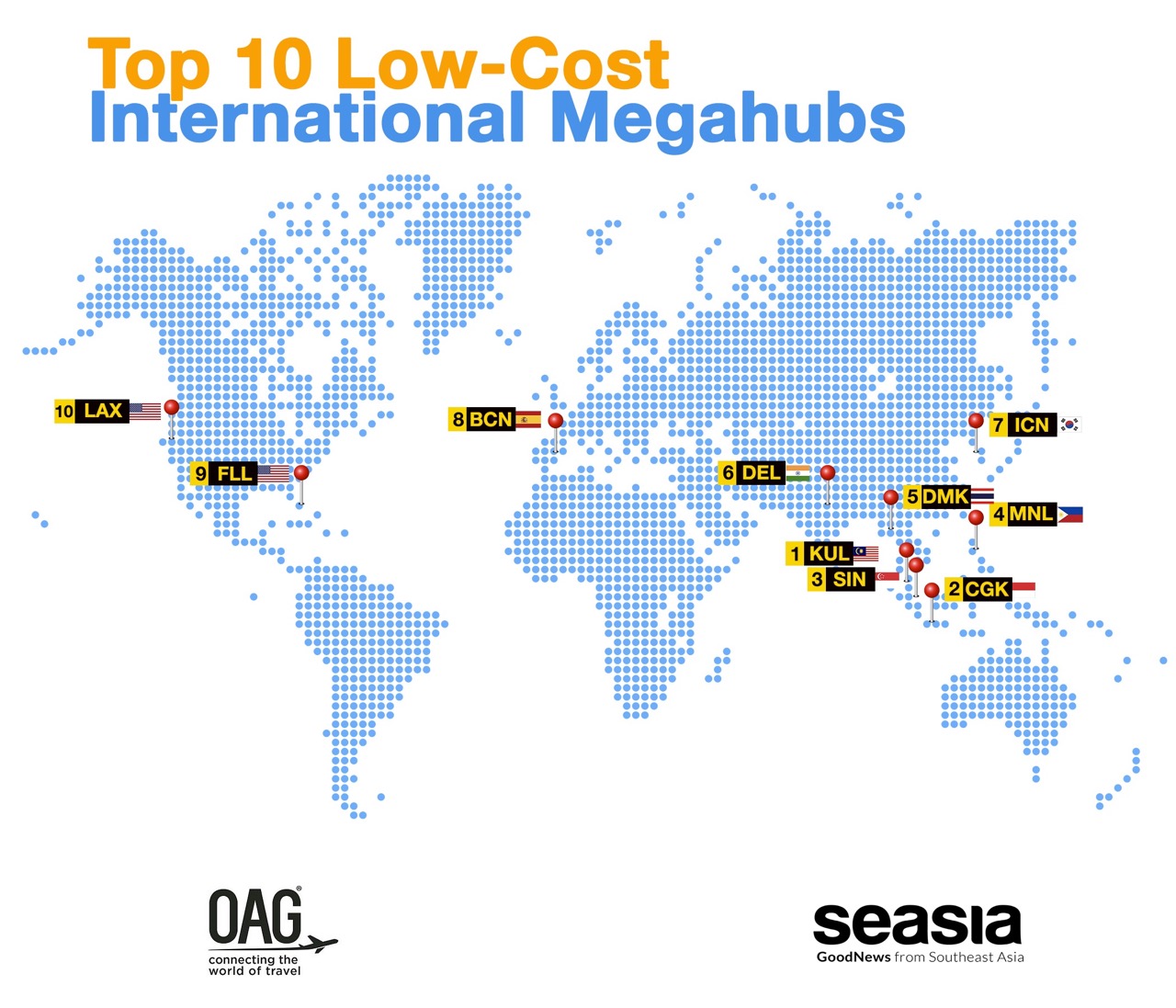Six of Asia Pacific’s largest airports are amongst the Top 20 most connected airports worldwide according to OAG’s International Megahubs Index 2018, which ranks those airports with the highest ratio of scheduled international connections to the number of destinations served.
Asia Pacific’s Top 5 Most Connected Megahubs:
- Singapore Changi – 8th
- Jakarta Soekarno-Hatta International – 10th
- Kuala Lumpur International – 12th
- Hong Kong International – 13th
- Bangkok Suvarnabhumi – 14th
In the International Low-Cost Megahubs section, ongoing low-cost airport infrastructure development, route network expansions and seat capacity growth enabled Kuala Lumpur International, home of Asia’s largest low-cost carrier AirAsia, Jakarta Soekarno-Hatta International and Singapore Changi to retain the top 3 global rankings. Manila Ninoy Aquino International, jumped from 12th place to 4th , with dominant carrier Cebu Pacific operating one-third of all flights.

Key Highlights
– The top three places for the low-cost International Megahubs remain as they were in 2017, with Kuala Lumpur Airport (KUL) ranked in 1st place. Low-cost carrier AirAsia dominates the airport with 40 percent of flight operations.
– Ranked 2nd is Jakarta Airport (CGK) and in 3rd place is Singapore Changi Airport (SIN). At both airports the dominant airline is a legacy carrier indicating the strength of competition between legacy and low-cost airlines.
– Manila Airport (MNL) has jumped up the rankings from 12th place last year to 4th place this year, with low-cost airline Cebu Pacific the dominant carrier at the airport and operating a third of flights. – Ranked 8th, Barcelona Airport (BCN) is the highest ranked non-Asian airport on the list.
– Fort Lauderdale Airport (FLL), ranked 9th, is the highest placed airport in the Americas, and has risen from 14th to 9th in the rankings. Low-cost carrier JetBlue is the largest airline and operates a quarter of all flights. – It’s clear that an airport can have a dominant legacy carrier and still succeed in having LCC Megahub status, most notably at Dubai (DXB) and Amsterdam (AMS
Source : OAG | marketwatch.com



















